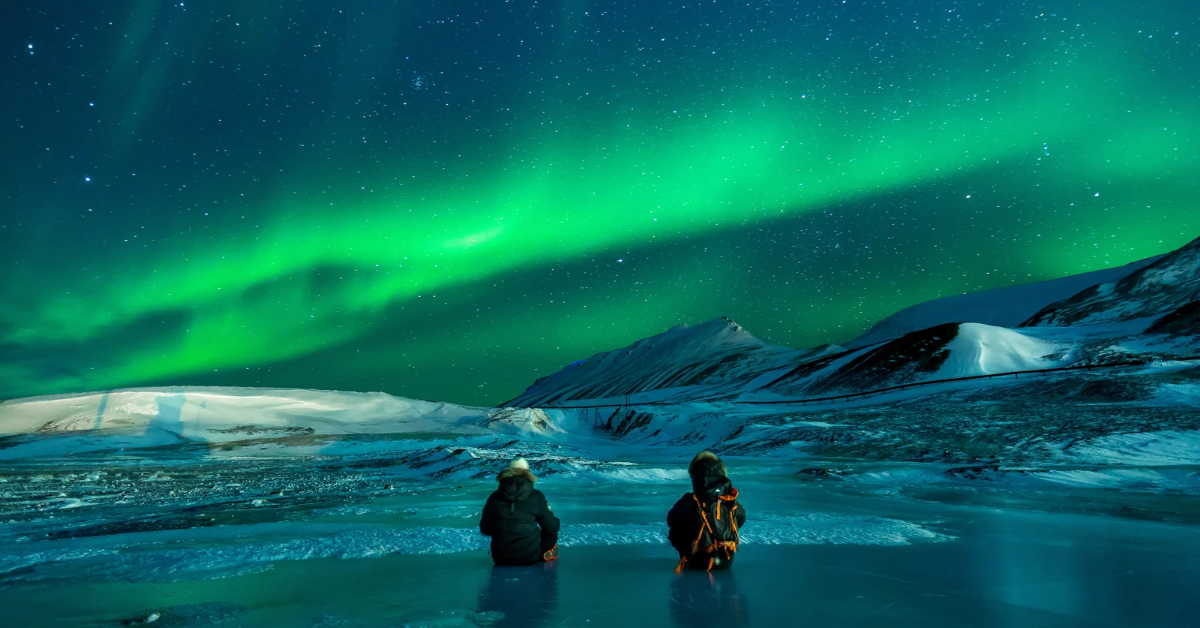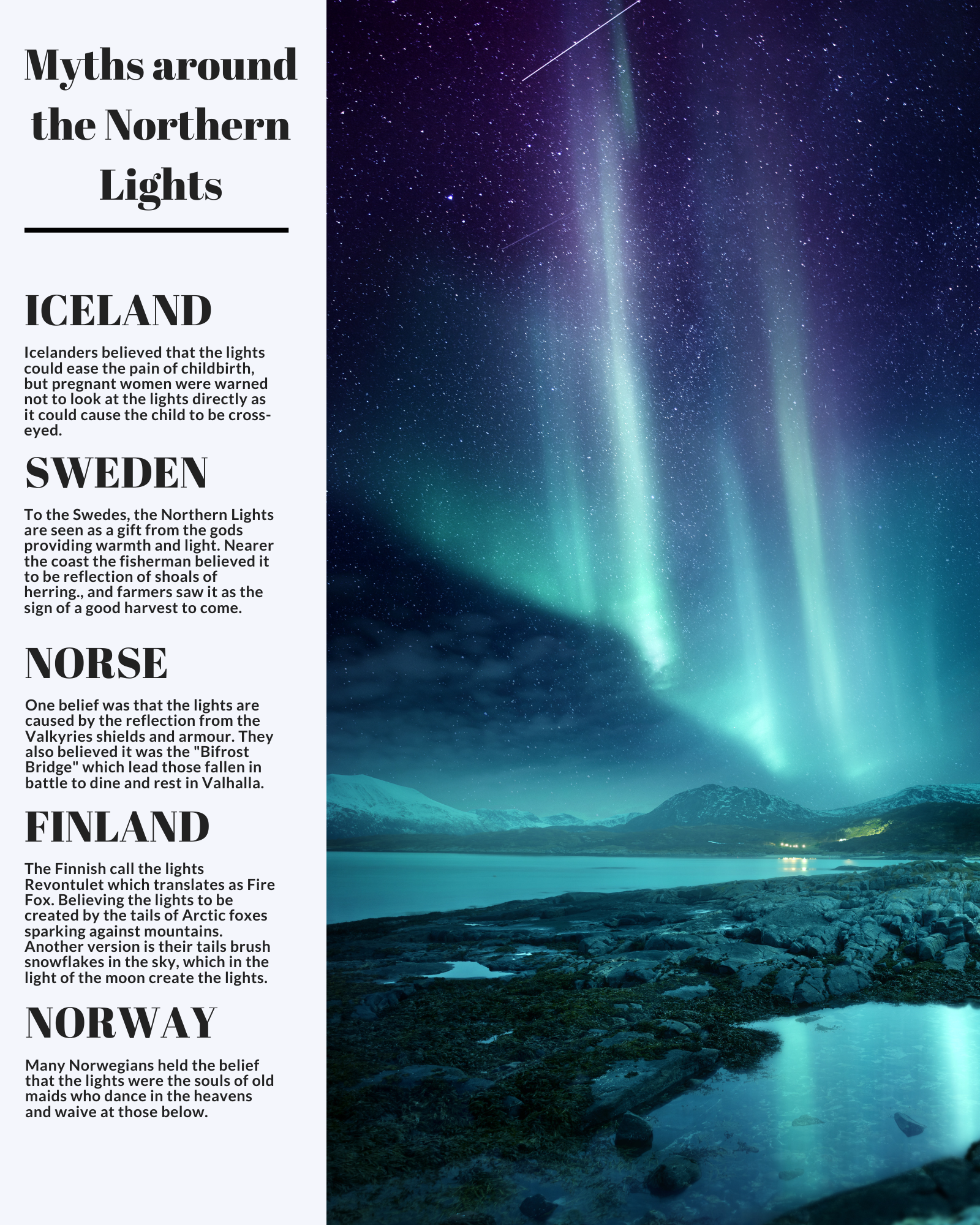
The Northern Lights are a natural phenomenon that can be found on nearly every traveller’s bucket list. Thousands of tourists flock to Reykjavik each year hoping to grab a glimpse of this sight. But not everyone is so lucky. Solar storms on the sun are sending electrically charged particles towards the earth, most of these are deflected away but some are captured by the earth’s atmosphere. They head down the Northern or Southern poles where they collide with other particles in our atmosphere. This causes them to heat up and glow creating this stunning light show that many travellers hunt for each year.

There are so many different factors that can affect their appearance, but also others that can affect your enjoyment of them. Here is everything you need to know about the Northern Lights. These are based on my experiene in Reykjavik but can apply anywhere.
Go remote to chase the Northern Lights
The further you are from the city, the less light pollution you have which prevents them from being visible. Light pollution is when the glow of a city, caused by streetlights, cars and houses, bleeds into the skyline reducing the visibility of stars. For the best chance to see the Northern Lights you need it to be as dark as possible.
Pick the right month
When Iceland is at its darkest and coldest, that’s when the Northern Lights shine brightest. The amount of friends and family I have that visited and complained they saw no Northern Lights or even snow in Iceland when they visited in the summer is unbelievable. The best season to see them is winter, but you have the highest chances between October and March. Iceland is beautiful in the winter and perfect for a Christmas trip.
Check the Northen Lights forecast
The weather is one of the biggest factors that influence the Northern Lights. If it’s cloudy then you don’t have a chance to see them at all. Check Iceland’s official met office as they have an Aurora forecast that predicts the likelihood of them being visible. Don’t get disappointed if it’s too low, both nights that I saw them it had been predicted as low as 31%, but then I was obeying point number one and staying remote so that increased my chances.
Stay up late
Peak viewing times are 11pm to 2am, so be prepared to stay up with some coffee as it’s going to be a late night. It was about 11:30pm when we saw them for ourselves. In some hotels they have a service button on their phone, pressing this will mean the receptionists will call and wake you up should the Northern Lights become visible.
Patience is key
We were growing impatient with one of us jumping up and checking the window every few minutes, and occasionally even put our boots on and venture outside just in case. Late in the evening a few of our friends were starting to get ready for bed whilst the rest of us, warmed by the copious amounts of beer and miniature bottles of vodka from our hostel’s self-serve bar, had the bright idea to build a snowman to pass the time. It was as we were putting on François’s head (we named him after our tour guide) that we looked up and saw for the first time ever the Northern Lights.
My point is it may be a long wait until the Northern Lights decide to show, so don’t just sit around waiting for them. Chat with your tour group, have a drink and a laugh or playing games together to pass the time will create a much more memorable story to go along with the lights.
Book a tour to the Northern Lights
Of course, there’s never a guarantee that you can see the Northern Lights. But if you want to maximise your chances then the best way to do this is to go on a tour. They will calculate how likely you are to see them, if it’s more than likely they won’t show, then they cancel and reschedule the tour for another night when the chances are higher. When the chances are high they will know exactly which direction to head in and the best viewpoints to get that picture-perfect view. These guys and girls are experts in their fields, plus many of the tours will bring coffee (or in some cases waffles) for you to buy and keep you warm on those cold Icelandic nights.
You can use the below link to book a tour with Get Your Guide. I use them on many of my trips as they make the process so quick and easy. By using the link below I may receive a small commission which helps support the blog.
Wrap up warm
Iceland’s name is entirely appropriate. It can be freezing so make sure you wrap up warm. The best way to do this is in layers so warm air gets trapped between them. This way you can easily regulate yourself by adding or removing layers as you see fit. Just make sure your gloves are smartphone compatible so you can have warm and therefore steady hands so you can still take some snaps. The last thing you want to do when hunting for the Nothern Lights is catch a chill.
Pack smart
If you want to capture that perfect snap of the Northern Lights, you want to be prepared. To get the best photos you need a long exposure time. The issue with this is that on a long exposure, even the steadiest hands can turn a well-framed photo into a blurry mess. You can reduce the risk of this by bringing a tripod for your camera or phone so that it can stay perfectly still. Even better to take them up another level further, then consider using a remote shutter, they are cheap and tiny accessories but also mean you can take that perfect group shot under the lights.
The Northern Lights come in more shades than green
Although when thought about many people picture the lights in the traditional green, the Northern Lights have a range of colours they can appear in. Although green is by far the most common, they can show signs of pink, red, blue and purple, or even white and grey. As the Northern Lights are a natural phenomenon, it means that nature can have a big impact on how it appears to us.





